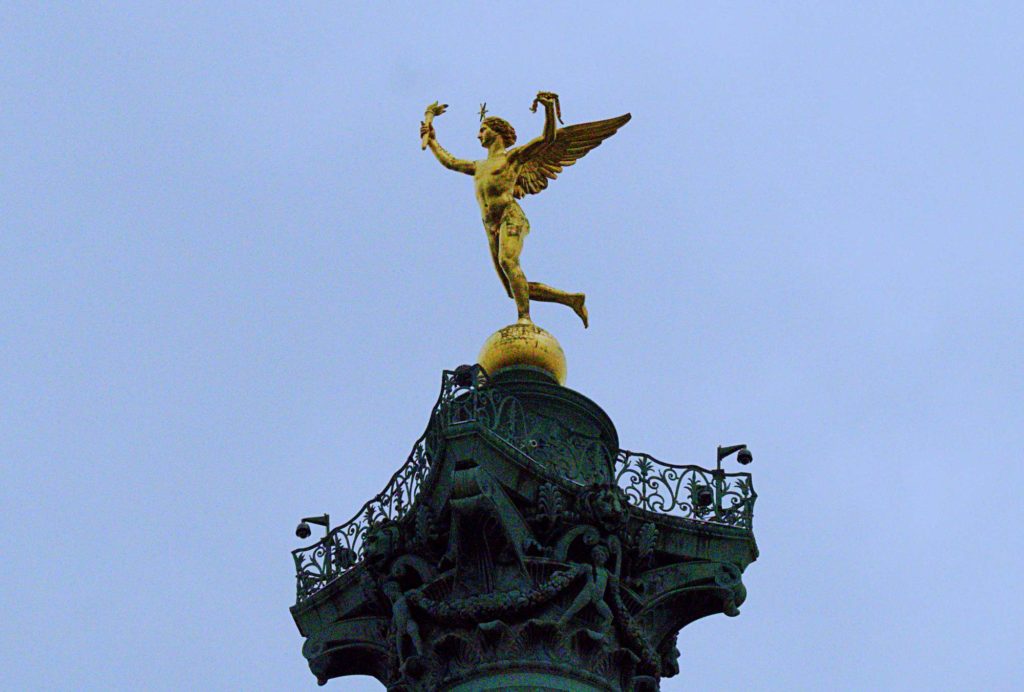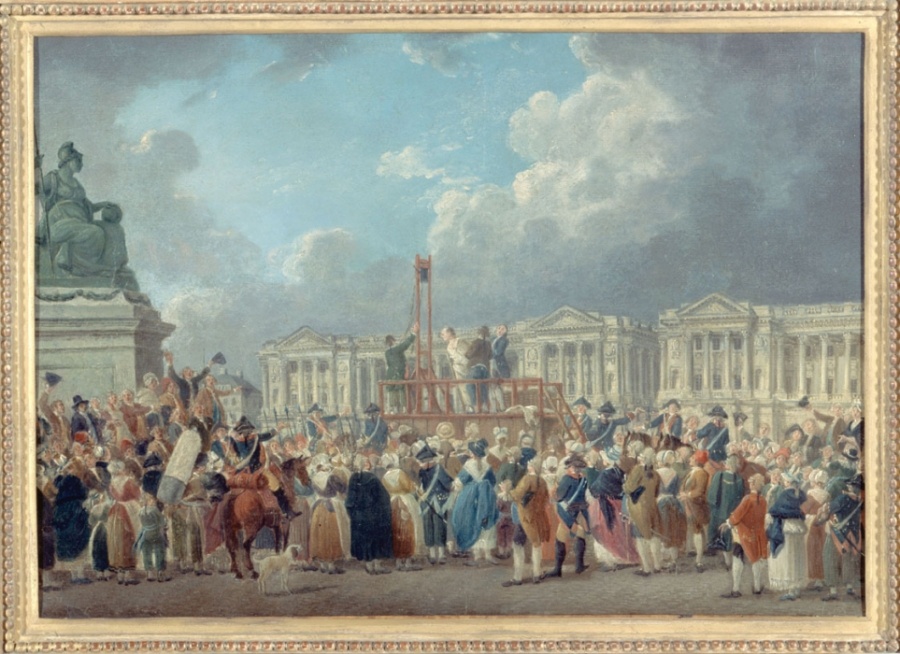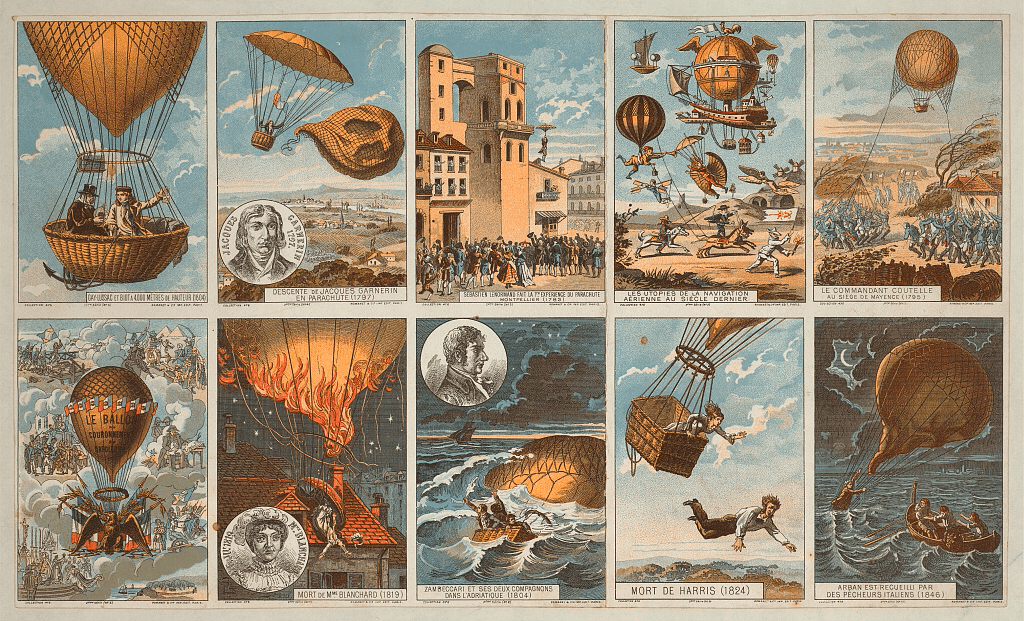The 14th of July is Bastille Day in France, and it is the best holiday of the year. For me it means a long weekend camping with the kids, fireworks at 11pm when the sun finally goes down, and walks along the coast.

But it’s not called Bastille Day if you’re in France. It is the 14 Juillet or just la fête nationale, National Day. So what happened on this day to make it so important in France and to be known throughout the world?
Origins
The Bastille was built in 1356 as part of the expansion of the city walls of Paris. It was the end of the Hundred Years war yet the French still feared an attack from the English. Originally the Bastille was just a large fortified gateway to protect the Porte Saint Antoine, one of the entryways into the city.

30 years later, still concerned about English retaliation as well as attacks from disgruntled Parisians, the Bastille became a fortress with eight towers linked by high walls, surrounded by moats and accessed by four sets of drawbridges.
The bastille prison
Under the ground, sewer like dungeons called cachots were built into the foundations. These cachots were to be used extensively under the rule of the powerful and feared Cardinal Richelieu in the 17th century, who became the chief minister of Louis XIII in 1624. He used his network of spies to hunt down and detain hundreds of people suspected of being enemies of the state.

Many people were imprisoned by the use of lettres de cachet, which was basically an order from the king to allow anyone to be imprisoned without any judicial process.
This meant any person in France could petition the king to imprison wives, husbands, sons, or daughters:
Christophe Aymond, journeyman, most humbly represents unto Your Highness that Geneviève Le Maître his wife of twelve years has thrice ruined him and destroyed his household through her unruly conduct and currently is no longer with the supplicant so as to have more liberty to live in debauchery, she is continually drunken and prostitutes herself publicly to the first passerby, she frequents only people of her ilk, with whom she eats up and dissipates everything that she can grab, her own mother the widow Le Maître, and her family have joined the supplicant, to most humbly beseech Your Highness to have the charity to grant an order to have said Geneviève Le Maître locked up in the hospital.
Farge, Arlette, and Michel Foucault. Disorderly Families : Infamous Letters from the Bastille Archives, edited by Nancy Luxon, University of Minnesota Press, 2017.
January 31, 1728.
What was it like to be a prisoner in the Bastille?
C’est la Bastille, ce me semble ;
C’est elle-mesme, par ma foy !
Ventre-bieu ! voilà bien dequoy
Faire que tout le monde tremble!It is the Bastille, it seems to me;
Claude Le Petit, La Chronique scandaleuse ou Paris ridicule, 1668
The very one, by my faith!
My God! I can see why it
Makes everyone tremble!

I am sure being a prisoner in the Bastille was not at all pleasant. If you were to believe former inmates, it was literally torture. René Auguste Constantin de Renneville, a French writer, was imprisoned in the Bastille for 11 years. After his release in 1713, he wrote a damning exposé of the prison:
In short , what have I not seen in that Mansion of Horror , during the space of above Eleven Years that I was there , oblig’d to suffer such Miseries as are beyond all Expression ? Without having been once Examined ; without having been able to obtain either Judges or Commissioners to try my Cause…They made me undergo a Punishment more insupportable than the most cruel Death…I have been dragged into dreadful and stinking Dungeons… I have seen Guilt triumph over Virtue , and trample upon Innocence ; Avarice gorge itself with the Blood of the Unfortunate.
The French Inquisition: or, The History of the Bastille in Paris, 1715
However, many historians now believe its bark was worse than its bite; that the romantic image of a Gothic horror house with daily torture and prisoners in chains sent there by a despotic monarch was not quite accurate. Many writers even saw it as their path to fame and fortune; André Morellet believed his short stay in the Bastille in 1760 “would be an excellent recommendation and infallibly make my fortune”.

Writer and historian Marmontel was almost complimentary when he wrote about his 11 day stay in the prison in 1759. He was served “an excellent soup, a succulent side of beef, a thigh of boiled chicken oozing with grease; a little dish of fried, marinaded artichokes or of spinach; really fine Cressane pears; fresh grapes, a bottle of old Burgundy and the best Moka coffee.”
Under Louis XVI, in the late 18th century, the cachots or dungeons were no longer in use. Most prisoners were held in octagonal rooms in the towers which had a bed with green curtains and several tables and chairs. All had a stove or chimney for warmth and could look out of their triple barred window. Personal possessions were allowed and even your own dogs or cats could be brought to deal with the rats.
Famous prisoners of the Bastille

In one of the ironies of history, Etienne Marcel, provost of Paris who built the original Bastille, was killed with an axe to the head in 1358 just outside its walls as he incited an attack on the monarchy.

Another provost, Hugues Aubriot, became the Bastille’s first prisoner in 1380 when he was found guilty of heresy and sexual relations with Jewish women.

One of the most famous, if not the most debauched prisoners, was the Marquis de Sade (from whom we get the word sadism), known for his erotic/pornographic literature and his sexual crimes. He was sent to the Bastille in 1784 under the conditions of a lettre de cachet his mother had written years earlier. Unfortunately for him, the Marquis de Sade was transferred to the insane asylum Charenton on 4 July 1789.
And why was that unfortunate? Because 10 days later the Bastille would fall.
The storming of the Bastille
And now we come to the crux of the matter. Why is there a Bastille Day in France?
On 14 July 1789, a crowd of angry Parisians descended on the Bastille.

For months there had been increased hostility against the inequalities of the social and economic system. Because of a previous freezing cold winter and a bad harvest there was a scarcity of grain and the price of bread was too high for most people. The taxes were high, and the treasury almost bare because of the French involvement in the American Revolutionary War of 1775-1783.
In Paris, rumours were rife of companies reducing the wages of their workers, and of monasteries and nobles hoarding grain. The people were angry, and they were hungry. And to fight, they needed weapons.

Ransacking the royal garde-meuble near the Tuileries Palace, the angry mob found antique halberds and pikes, a sword said to have belonged to their Henri IV and a cannon inlaid with silver that had been presented to Louis XIV by the King of Siam. They had only found three muskets after a search of the Hôtel de Ville.
But where was the gunpowder? 250 barrels of powder had been moved from the national Arsenal to the Bastille only a few days earlier, a fact which was widely known.

At around 10am on the morning of 14 July, around 900 people descended on the Bastille – artisans, labourers, soldiers who had turned revolutionary. After negotiations with the prison governor, Bernard-René Jordan de Launay failed, the mood turned violent and the crowd stormed their way into the prison. Over one hundred of the mob died in the ensuing battle, including one soldier trying to protect the building. De Launay was dragged through the streets and killed.
And so the French Revolution began.

The storming of the Bastille was not a great battle, but it became an important part of revolutionary propaganda. Because of its previous association with absolute and arbitrary royal power, the liberation of prisoners was the liberation of the French from state power, the fall of the Bastille came to symbolise the fall of the monarchy itself.
In fact, there were only seven prisoners in the Bastille at the time to be liberated – two lunatics who were quickly put back into an asylum, four forgers and an aristocratic delinquent.
What remains of the Bastille today?
In a word, nothing. By 1790 the building had been completely demolished. Stones were taken as keepsakes, women wore jewellery made from tiny pieces of Bastille rubble. The site became a tourist attraction.
Four skeletons were found in the wreckage in April 1790, believed at the time to be forgotten prisoners. They were more than likely prison guards dating back to the Renaissance, but events like this, while France was still in the midst of revolution, cemented the image of the Bastille as a fallen symbol of power.

Napoleon Bonaparte, on becoming Emperor in 1804, set about wiping all thoughts of revolution from the minds of Paris. He wanted to build a statue of an elephant, complete with fountain, on the site of the Bastille to show the world that France was a strong colonial empire. Unfortunately there was no money in the state coffers for enormous bronze elephants, and in 1814 a plaster model was placed there instead. By 1846 the poor elephant was riddled with rats and falling to pieces and was pulled down.
In 1840 the Colonne de Juillet, or July Column, was erected in the Place de la Bastille to commemorate the Revolution of 1830 (yes, there was more than one revolution…). The 47 metre high column is inscribed in gold with the names of the people who died in this revolution. On top of the column a Génie de la Liberté (Spirit of Freedom) perches on one foot on top of a gilded globe, holding the flame of freedom.

The July Column is still there today.
So how will you celebrate Bastille Day in France this year?
VIDEO FROM PARIS
The area from the Bastille to the Seine river became the Port de l’Arsenal. It’s a gorgeous hidden gem in Paris, watch my video here:
useful links
Janine at The Good Life France has a very French playlist from Paris Chanson to listen to the golden age of French music to celebrate Bastille Day
Pierre at French Moments wrote a great article on the Canal Saint Martin
Further reading
Simon Schama, Citizens: A Chronicle of the French Revolution, New York, Knopf, 1989
James Crawford, Fallen Glory: the lives and deaths of 20 lost buildings, Old Street, 2015



